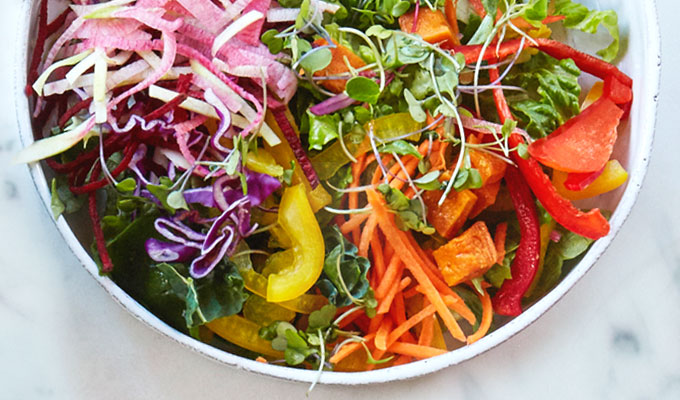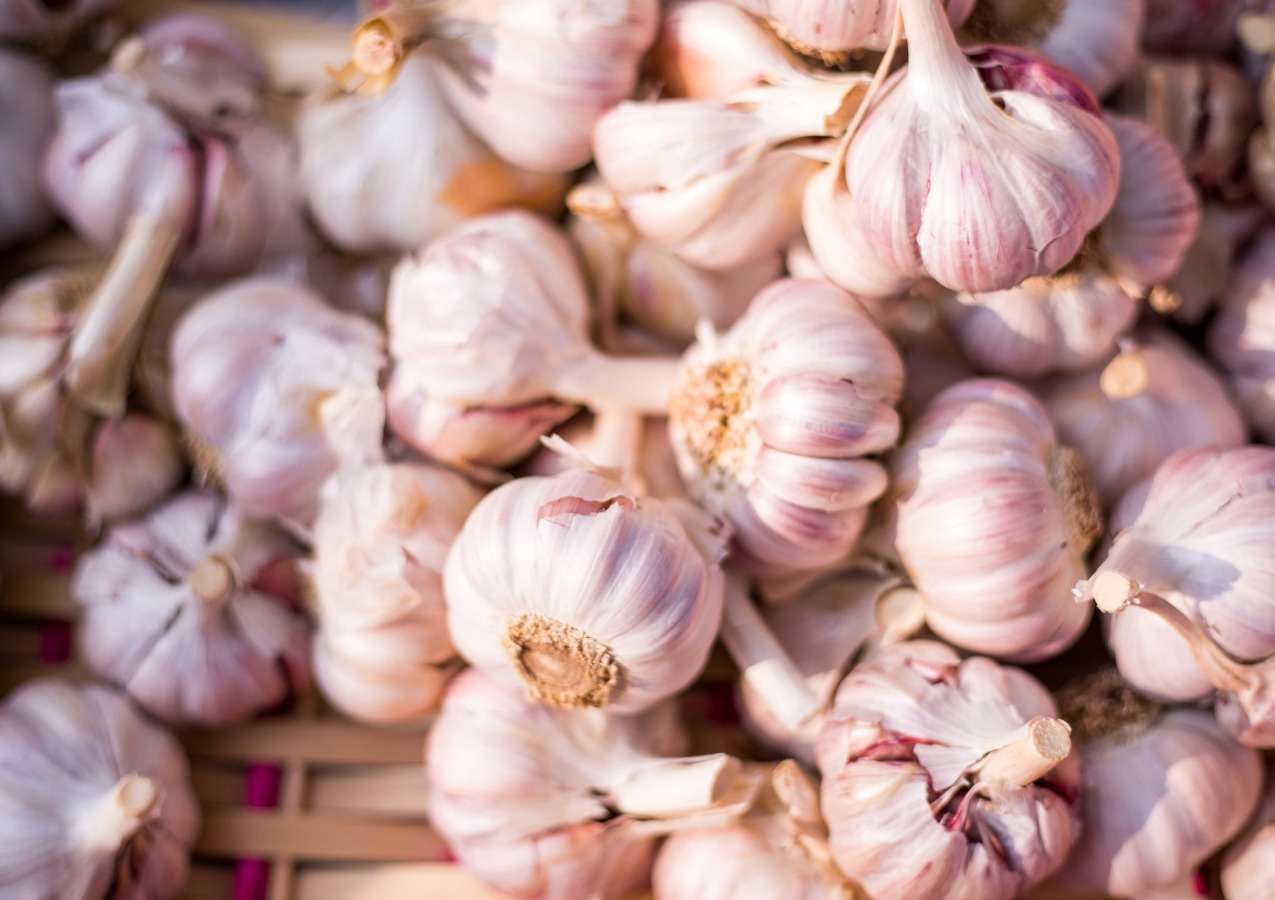An on-the-go snack here, a working lunch there, and a grab-whatever’s-left-in-the-refrigerator for dinner at night. In the middle of a busy week, it’s easy to overlook your body’s nutritional needs, and by Friday, a week of less than mindful eating can leave you feeling run-down. Fortunately, we’ve got a simple solution: Eat the Rainbow.
That’s right. One of the simplest ways to ensure your body gets all of the nutrients it needs is to eat fruits and vegetables in the full spectrum of colors. Nature has its own “color-coding” system, with different compounds creating different hues in our foods. For example, beta carotene is responsible for the yellow-orange pigment in carrots and, when consumed, is converted by our bodies into Vitamin A, which supports eye health.
Reminding yourself to Eat the Rainbow can help guide you to make healthier choices throughout the day. Keep a mental checklist, tracking how much red, orange, yellow, green, purple, and white plants you’ve eaten throughout the day, and choose accordingly at mealtime. Haven’t had any red yet today? Opt for a tomato-watermelon salad at lunch, or pick up a beet juice before your workout. Still running short on the entire spectrum by dinner-time? Toss together a chopped salad that includes a vegetable of each color, or try our recipe for Roasted Butternut and Pomegranate Salad. For an easy, colorful lunch, order our Rainbow Salad, a colorful, veggie forward salad that is loaded with nutrients to give you energy throughout the day.

Red – lycopene, anthocyanin
Benefits: disease prevention, heart health, urinary health, eye health
Best sources: tomatoes, beets, watermelon, strawberries, raspberries
Orange/yellow – Beta carotene
Benefits: healthy skin, eyes, immune system
Best sources: sweet potato, carrots, butternut squash, cantaloupe, sweet red/orange/yellow peppers
Green – lutein and indoles
Benefits: lower risk of some cancers, improves eye health
Best sources: kale, spinach, broccoli, Brussels sprouts
Purple/blue – anthocyanins, flavonoids
Benefits: improves cognitive function, immune and bone health, urinary health
Best sources: purple cabbage, eggplant, blueberries, concord grapes, blackberries
White – allyl sulfides
Benefits: supports immune, lymph, and heart health
Best sources: garlic, cauliflower, onions
Recipe: Roasted Butternut and Pomegranate Salad
(Source: Urban Remedy Cookbook)
The bright orange of the butternut combined with the beautiful tones of pomegranate seeds make this salad flavorful (and a dish to impress guests!)
½ small butternut squash, peeled, seeded, and cut into 1-inch cubes
3 cups chopped romaine lettuce
1 cup very finely shredded purple cabbage
Seeds of ½ ripe pomegranate
For the dressing:
½ clove garlic, passed through a garlic press
¼ tsp sea salt
1 Tbsp extra-virgin olive oil
1 Tbsp cider vinegar
Preheat the oven to 350F. Spread the squash cubes on a rimmed baking sheet and roast until tender, about 25 minutes. Remove from the oven and let cool.
To make the salad, in a bowl, combine the lettuce, cabbage, and pomegranate seeds, toss to mix well, then top with the cooled squash.
To make the dressing, in a small bowl, stir together the garlic, salt, oil, and vinegar, mixing well. Drizzle the dressing over the salad and toss to coat evenly.


